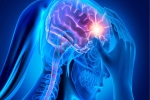Home »
Blog » Pain Management
| Stem Cell, PRP, Acupuncture in Queens & Long Island, New York
Pain Management | Stem Cell, PRP, Acupuncture in Queens & Long Island, New York
These back exercises using exercise balls are designed to strengthen the muscles that support the spine from the lower back to the upper back, in front and back. Specific muscles targeted by these exercises include the abdominal, chest, and back muscles. These core body strength exercises with the ball can be challenging to perform. They should be learned with the help of an appropriately trained physical therapist, chiropractor, certified athletic trainer, exercise physiologist, physiatrist, or another type of spine specialist or exercise instructor.
Read more
The benefits of regular exercise are well known. But sports activity is one of the leading causes of injury to the hand, wrist, and elbow. They range from overuse injuries like tennis elbow and golfer's elbow to damage resulting from falls, such as skier's thumb and wrist sprains. Learn about some of the most common sports injuries that affect the upper extremities.
Read more
The exercise ball (or Swiss ball or physio ball) is a versatile piece of exercise equipment available to help people with back pain. In particular, many exercise ball programs are designed to bring movement to the spine in a controlled manner to help keep the discs nourished. Moving the vertebrae helps nourish the discs in the spine by increasing blood flow around the disc and by causing the water to flow in and out of the disc.
Read more
Arthritis is a condition that results in pain and inflammation in joints. There are two main types: osteoarthritis (OA) and rheumatoid arthritis (RA). OA the most common form of arthritis occurs when the cartilage that sits between the bones in a joint wears down. People sometimes refer to the condition as “wear and tear” arthritis. RA occurs when the immune system mistakenly attacks healthy body tissue. It causes damage to the joints but can also affect muscles, connective tissue, tendons, and fibrous tissue.
Read more
Ankle sprains are one of the most common injuries in the United States. But what is the difference between a common ankle sprain and a high ankle sprain? Why must athletes who sustain high ankle sprains stop playing sports for a longer period than those with common ankle sprains? The reason lies in the anatomy of the leg and ankle and the different ligaments injured in a high ankle sprain.
Read more
The numerous applications of the exercise ball follow a range of difficulty levels, and the benefits for back pain patients can be felt at each level. From merely sitting on the exercise ball to doing structured aerobic exercise routines, the basic support needed by the back and stomach muscles is the same.
Read more
Migraine is a common condition, affecting more than 37 million people in the United States and up to 148 million worldwide. And some evidence suggests that migraine prevalence might be increasing globally. According to the World Health Organization (WHO), migraine is around twice as common in women than men.
Read more
What Is The Anterior Cruciate Ligament (ACL)? The ACL crosses the posterior cruciate ligament in the center of the knee joint and is part of a group of ligaments that connect the thigh bone (femur) to the lower leg (tibia). These ligaments stabilize and support the knee joint. The ACL prevents the tibia from moving too far forward on the femur. It also keeps the knee from twisting inward excessively.
Read more
The term "Swiss ball" was coined because one of the earliest noted uses of an exercise ball was in Switzerland in 1965, where a group of physical therapists used it in their work with children with cerebral palsy. The exercise ball may also be referred to as: Gymnic Ball or Gym Ball, Stability Ball, Therapy Ball, Physio Ball, Blue Ball (Because Many Are Blue).
Read more
As the Official Hospital of the New York Mets and five other professional sports teams in the New York area, the Hospital for Special Surgery's sports medicine specialists treat hundreds of elite and professional athletes each year, as well as those who play sports on club teams or solely for recreation. Baseball and softball players at any level of competition may experience a range of arm-related injuries involving the shoulder, elbow, hand, or wrist. This is due to overuse caused by repetitive throwing, bat swinging and even catching balls at high speeds.
Read more
Love this Post? Spread the World






















